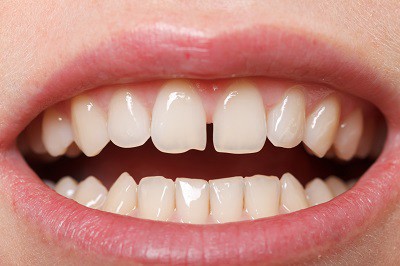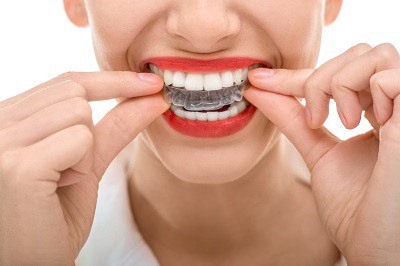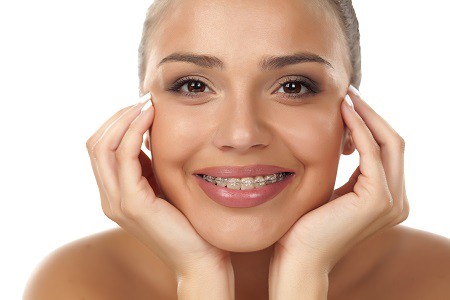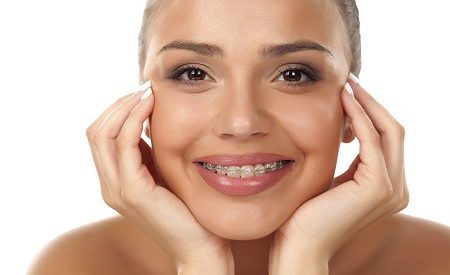Many of us are born with gaps or spaces between our teeth. You may have a large gap between your two front teeth, or spaces between some of your other teeth. Depending on a multitude of factors, these spacing issues may or may not affect the overall balance, function and comfort of your bite.
Teeth Gaps and Retainers
It is possible for a retainer alone to close gaps between teeth. Here?s the catch: It can take a long time to close gaps this way, probably several years. So long that you may wish you had just gotten braces.
 Many people have gaps between their teeth. If your gap makes you feel less confident, or if it affects your bite, there are a few orthodontic options to close the bite and straighten your teeth.
Many people have gaps between their teeth. If your gap makes you feel less confident, or if it affects your bite, there are a few orthodontic options to close the bite and straighten your teeth.
The purpose of a retainer is to hold your teeth in place once they have been straightened and aligned. They are designed to specifically fit over your teeth at the end of your orthodontic treatment. So if an impression of your teeth is taken, the retainer is designed, and then you wear the retainer, it?s not going to move your teeth and close your gap unless the retainer is made to be smaller and in a different shape than your teeth are now. Otherwise, it will simply hold your teeth in position as they are now. Therefore, retainers aren?t always the most effective method for closing gaps.
What?s a Retainer?
A retainer is a molded plastic piece with a couple wires designed to fit over your teeth, at least traditionally. Today, we also used ?fixed? or ?bonded? retainers. Fixed retainers are slim, tiny wires bonded to the back surface of your teeth, usually the lower and upper front teeth. Many orthodontists favor one type or the other, and still more favor a combined approach: attach the bonded retainers after the braces are taken off, and provide a custom molded retainer for wear at night.
 One of the more common types of retainers are clear and fit over your teeth.
One of the more common types of retainers are clear and fit over your teeth.
Retainer use is essential to orthodontic results. You may have met more than one adult who wore braces before, received a retainer and then stopped wearing it at some point later in life. They probably express regret! Teeth and teeth roots want to spring back into their former positions, even years later. Failing to wear a retainer undoes the results achieved with braces and aligners.
Invisalign Aligners vs. Retainers
If you are interested in straightening your teeth but hate the idea of wearing braces, know that there are other options. Invisalign aligners look a lot like modern retainers, except clearer, slimmer and far less visible when worn over your teeth. Invisalign may be a good option for you if you want to close significant spaces in your teeth but you don?t want to wear braces.
There are many advantages to Invisalign , for people who are good candidates:
- Virtually invisible on your teeth
- Effectively correct a wide range of issues, including crooked teeth
- Removable, so your diet can stay exactly the same
- Removable, so you can brush and floss normally
An orthodontist must first determine your candidacy. Invisalign isn?t right for everyone, especially people with significant bite problems and badly rotated teeth. But for those who are good candidates, Invisalign provides a metal-free way to straighten teeth and close gaps.
How To Find Out What?s Right for You
 Braces remain a great option for closing spaces between teeth.
Braces remain a great option for closing spaces between teeth.
If you are unhappy with gaps or spaces between your teeth, and if you want to do something about it, you must meet with an experienced orthodontist. They will assess the position of your bite and the alignment of your teeth to determine which treatments will be effective.
Here are some of the things you can expect at your appointment: If you have arranged a complimentary consultation with an orthodontist to discuss your options, they may include free x-rays of your teeth. You should ask them about free x-rays when you arrange your consult. These images make it possible for the orthodontist to see how your teeth, teeth roots and jaw bone are positioned. From there the orthodontist can determine your options, which may include Invisalign, braces, Incognito behind-the-teeth braces and possibly retainers. Incognito uses brackets and wires like traditional metal braces, but they are affixed to the back surfaces of your teeth. They are really difficult for other people to see when you?re talking or laughing.
So what do you do next? Arrange an appointment with an experienced orthodontist in your area. It?s the first step in your journey toward loving your smile. Ultimately, Invisalign or braces may be a much faster, more effective and more permanent way to close the gaps between your teeth, but there?s no harm in discussing whether a retainer will work.


